Articles and Features
The Infiltrator: How French street artist JR puts his work amongst the people
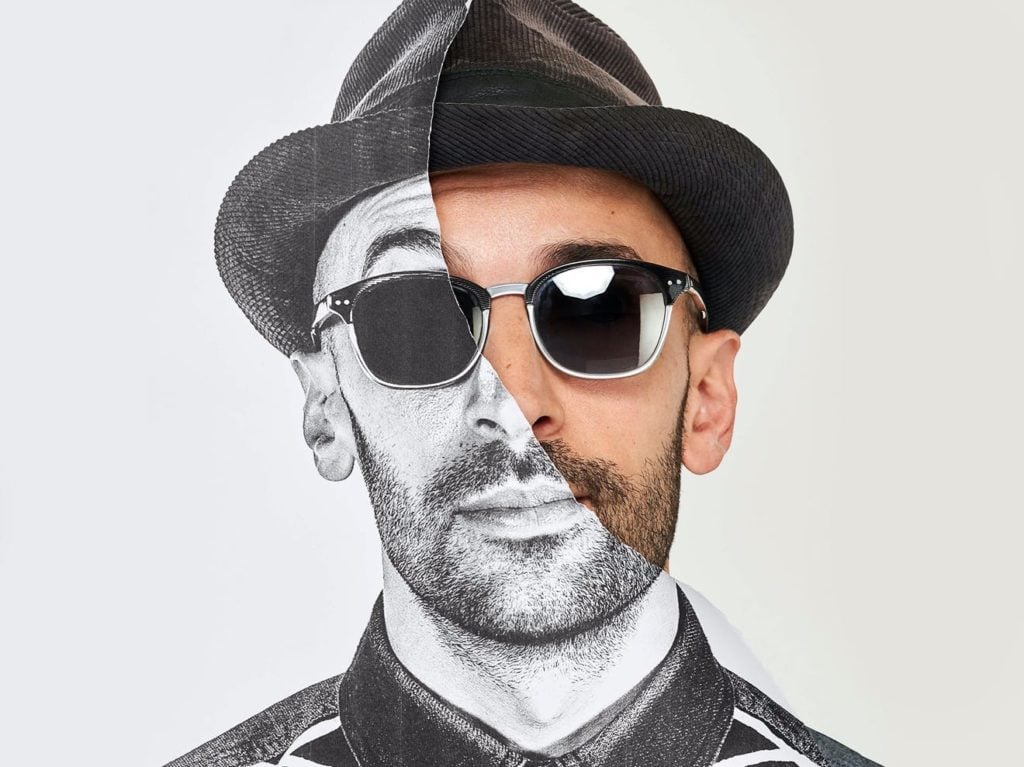
By Shira Wolfe
“All places have their own difficulties, but it’s a challenge. That’s when you find yourself pushing boundaries. That’s what makes it interesting for an artist and for the people. That creates more links between people. That extra fight is always worth it, because the art is then better.” – JR
French street artist JR creates what he calls “Infiltrating Art”, art that is truly free for everyone to admire. He exhibits his large photographs on walls all over the world, usually working together closely with the local community. Photographing locals, he then pastes their faces all over their own neighbourhoods and communities. There is no explanation accompanying the huge portraits, allowing for passersby to make their own associations and stories. Yet often, the very locations of the photographs speak volumes. We take a look at some of his most important projects around the world.
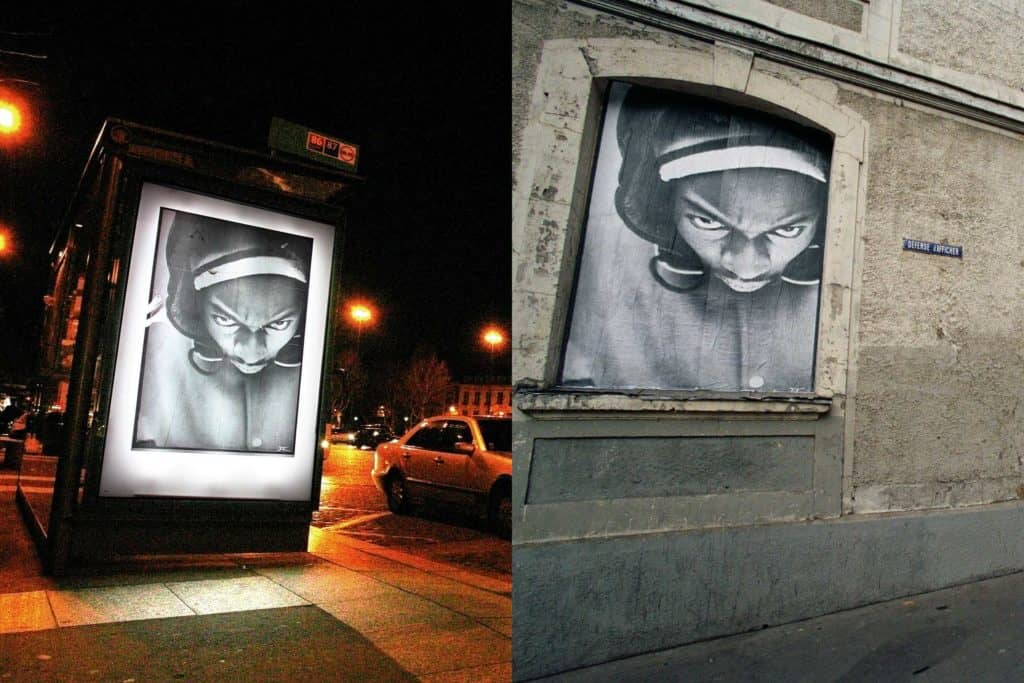
Portrait of a Generation (2004-2006)
In 2004, JR held his first exhibition on the walls of Les Bosquets, the ‘ghetto’ of Montfermeil, a suburb of Paris. He was searching for places where people wouldn’t expect to see art. He photographed the young inhabitants of the neighbourhood and pasted enlarged copies of the photos on the walls. After riots broke out in that same neighbourhood in 2005, triggered by the deaths of two teenage boys who had been hiding from the police in an electricity substation, JR returned to the neighbourhood in 2006. He had become friends with many of the people there, who were now being portrayed as out-of-control problem kids by the media. JR wanted to challenge the term racaille, or “scum”, that the Minister of the Interior had used to describe the rioters. Together with his friend, local artist Ladj Ly, JR started a project with the young people of Les Bosquets. He shot portraits of them pulling scary faces, caricaturing themselves, then pasted the enlarged photographs all over Les Bosquets, as well as in bourgeois districts of the city. The in-your-face portraits of these people playing the part of the bad boy sharply provoked passers-by to question the way they were portrayed in the media.

Face 2 Face (2007)
In 2007, JR and his artistic collaborator Marco organised the largest illegal photography exhibition ever. They pasted monumental portraits of Israelis and Palestinians side-by-side, face-to-face, on both sides of the separation wall and in several Palestinian and Israeli cities. They photographed Palestinians and Israelis with the same occupation, and placed them right beside each other, showing people how many similarities these conflicted people really share. In the words of JR and Marco: “After a week, we had the exact same conclusion: these people look the same; they speak almost the same language, like twin brothers raised in different families. A religious covered woman has her twin sister on the other side. A farmer, a taxi driver, a teacher, has his twin brother in front of him. And he is endlessly fighting with him. It’s obvious, but they don’t see that. We must put them face to face. They will realize.”

Women Are Heroes (2008-2014)
In 2008, JR started a new project titled “Women Are Heroes,” which ended in 2014. Wanting to underline the important role of women in society and to highlight their dignity, JR photographed women around the world in their everyday lives and pasted their photographs in their villages, cities, even on the other side of the world. In the Morro da Providência favela in Rio de Janeiro, Brazil, he pasted huge photos of the faces and eyes of local women on buildings covering the mountainside. In Kenya, he placed the eyes and faces of women from the slums of Kibera on their rooftops. He also worked with women in India, Cambodia, Sierra Leone, Liberia and Sudan. At the end of each project, he made a book which he shared with the participants. The project ended in July 2014, when 2600 strips of paper with women’s faces were pasted on a container ship in Le Havre, France. The ship travelled across the globe to Malaysia, carrying the many faces of the women to different parts of the world.
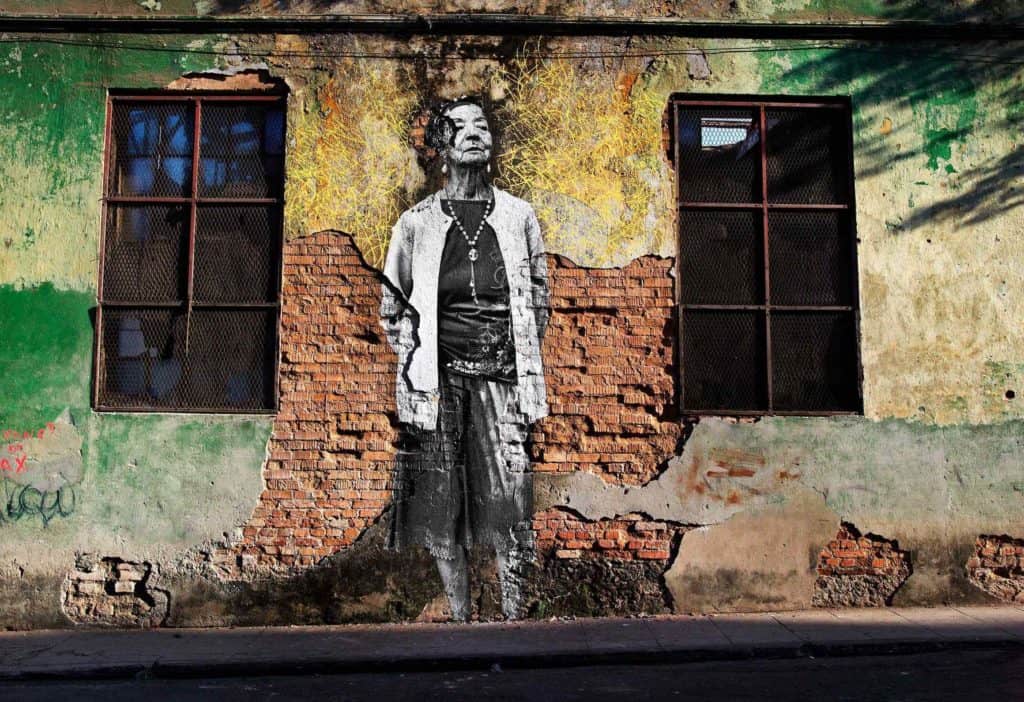
The Wrinkles of the City (2008-2015)
In 2008, JR initiated “The Wrinkles of the City”, a touching project presented in various cities around the world where both human and architectural wrinkles can be found. He started in Cartanega, Spain, where he pasted pictures of the oldest inhabitants of the town on the historical facades. The project continued in Shanghai, Los Angeles, Havana and Berlin, ending in Istanbul in 2015. In this last chapter of “Wrinkles of the City,” JR portrayed older people who had lived through the great changes and upheavals of their city, in particular the secularisation of Istanbul after 1924. By enlarging their portraits and pasting them in different neighbourhoods, he reflected the changes in the architecture of the city’s various areas.

“I wish for you to stand up for what you care about by participating in a global art project, and together we’ll turn the world… INSIDE OUT.” – JR
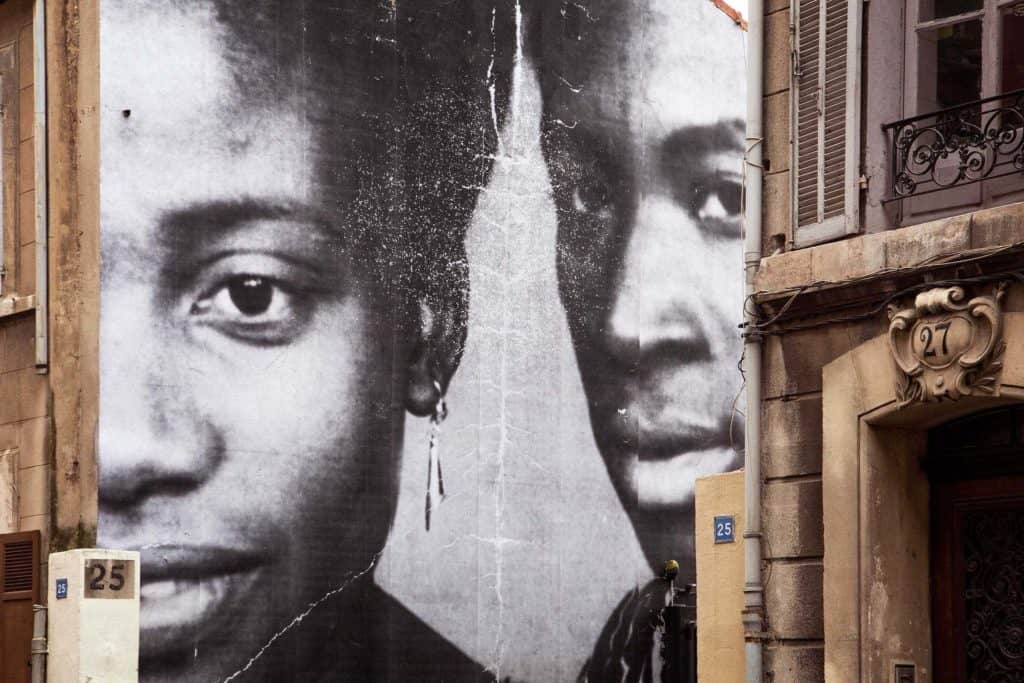
Unframed (2009-ongoing)
Unframed is an ongoing project in which JR uses images by famous or anonymous photographers, as well as archival images. He then reinterprets them and takes them out of their original context, pasting the images in the neighbourhoods or cities he works in. An example of the project is JR’s initiative in Marseille in 2013. He invited inhabitants of the La Belle de Mai neighbourhood to consider the personal and collective memory of their streets by looking at their personal photo albums pasted on the facades of the buildings.
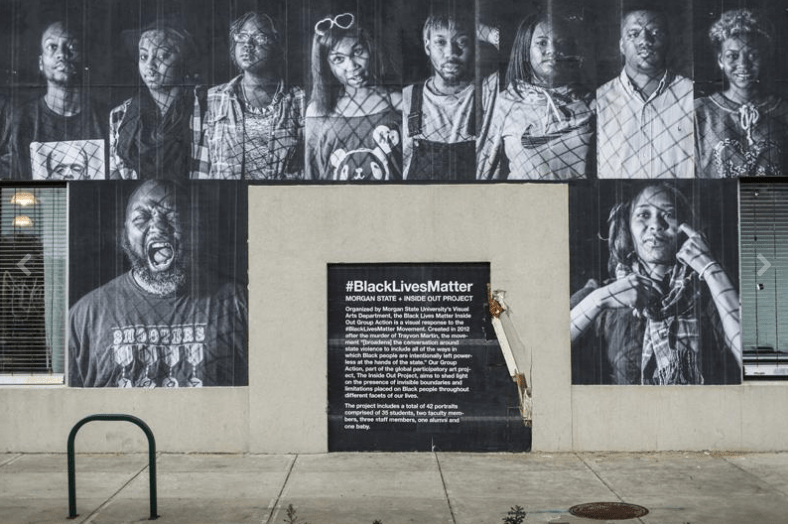
Inside Out (2011-ongoing)
In 2011, JR was awarded the TED Prize, and using the money he was awarded, he initiated a global art project – the Inside Out project. “I wish for you to stand up for what you care about by participating in a global art project, and together we’ll turn the world… INSIDE OUT,” he stated. The concept of the project is to give anyone who wants to the opportunity to share their portrait and a statement of what they stand for with the world. Everyone can participate, and is challenged to share the untold stories of people in their communities through their photographic images. The actions are documented, archived and exhibited online at www.insideoutproject.net.
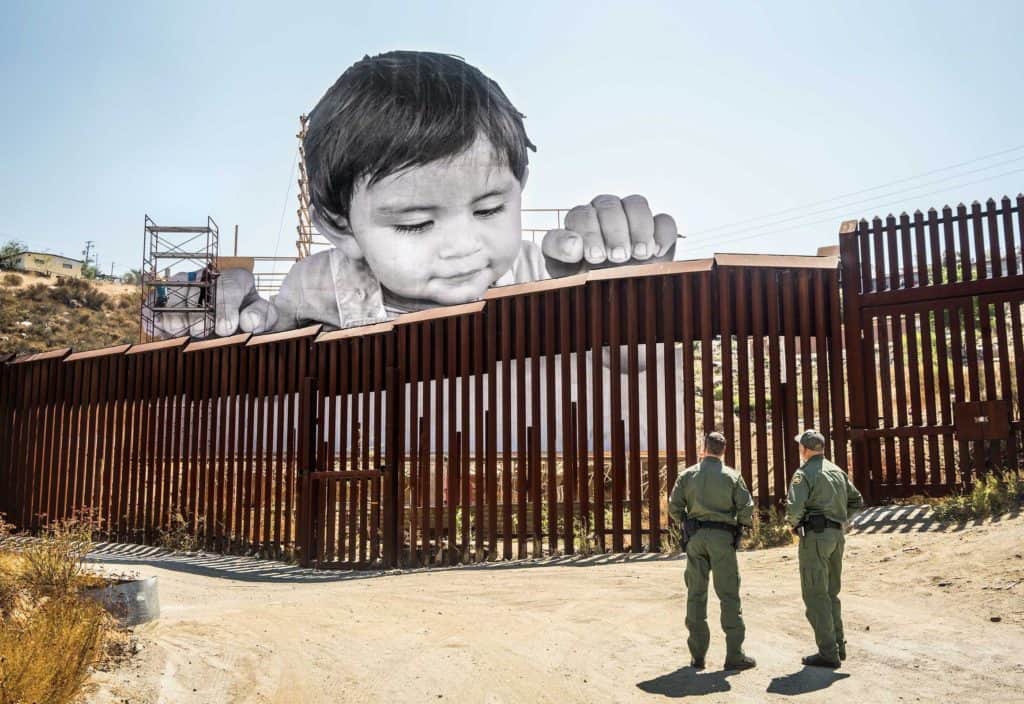
Migrants, Picnic Across the Border/Giants, Kikito, US-Mexico border (2017)
Following the news about the plans to construct a permanent wall between the United States and Mexico, JR created a gigantic installation supported by scaffolding at the border fence in the Mexican city of Tecate. The installation showed a giant photo of Kikito, a toddler whose house in Tecate overlooks the border fence. Kikito playfully peeked over the fence from his side, so the piece could be best appreciated from the United States side. On the day before the work was to be taken down, JR organized a picnic that took place across both sides of the fence. Hundreds of guests from both the United States and Mexico came together to share a meal, gathered around a long table stamped with JR’s iconic eyes.
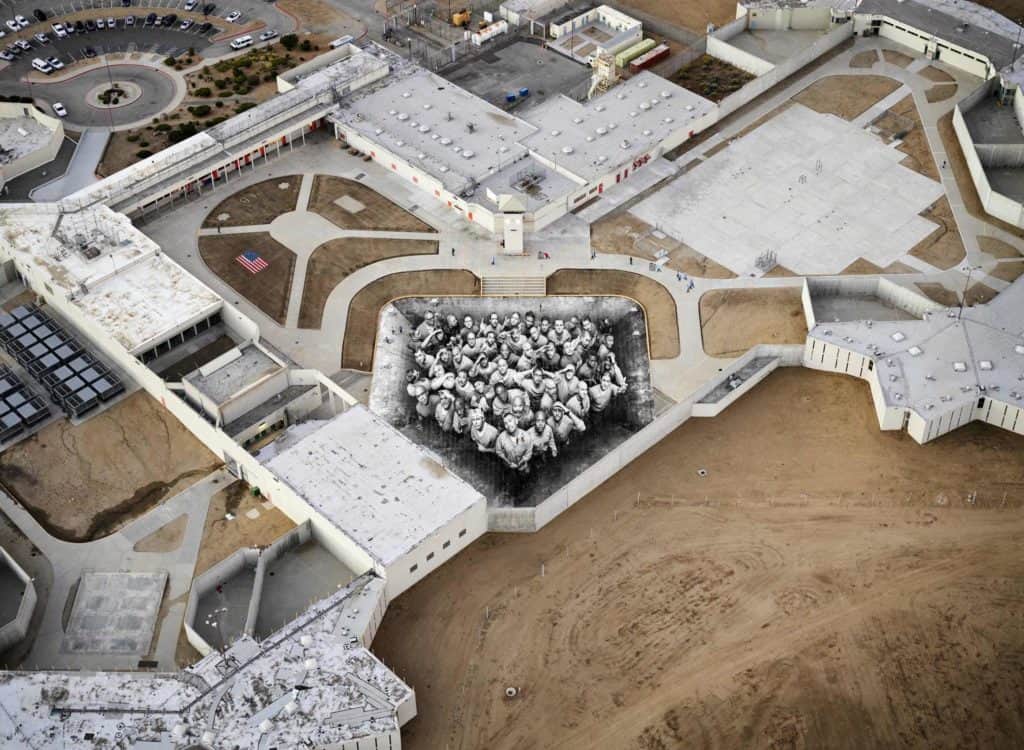
Tehachapi, The Yard (2019)
In October 2019, JR received permission to work in a maximum-security prison in Tehachapi, California. At Tehachapi, the majority of the inmates has been imprisoned for nearly a decade, and many are sentenced to life with no chance of parole. JR and his team photographed the men from above, and they were given the opportunity to tell their story in front of a camera, exactly as they wished. Former prisoners and prison staff were also photographed. In total, forty-eight portraits and stories were collected. JR and his team then returned to paste 338 strips of paper on the ground of the prison yard, working together with prisoners, guards, former inmates and members of JR’s studio. The final image can only be seen clearly from above – inmates, former inmates, prison staff, and victims stand shoulder to shoulder. This was a naturally ephemeral installation that disappeared in three days under the footsteps of the prisoners.

JR’s Major Exhibitions
Despite the street being his favourite, and largest, art gallery, JR’s works are also exhibited within the actual gallery context. JR is represented by Galerie Perrotin, PACE Gallery, Galleria Continua and Nara Roesler. In 2013, the first retrospectives of his work took place at the Watari-Um Museum in Tokyo and the Cincinnati Contemporary Arts Center, followed by exhibitions at the Frieder Burda Museum in Baden Baden in 2014, and at the HOCA Foundation in Hong Kong in 2015. He exhibited in 2018 at the Maison Européenne de la Photographie in Paris, and in 2019 at the San Francisco Museum of Modern Art (SFMOMA) and the Brooklyn Museum.
The centrepiece of the Brooklyn Museum exhibition, which ran through October 18 2020, was The Chronicles of New York City, a new mural of over 1000 New Yorkers, accompanied by audio recordings of each person’s story.
Relevant sources to learn more
Discover more details about JR’s large-scale projects: